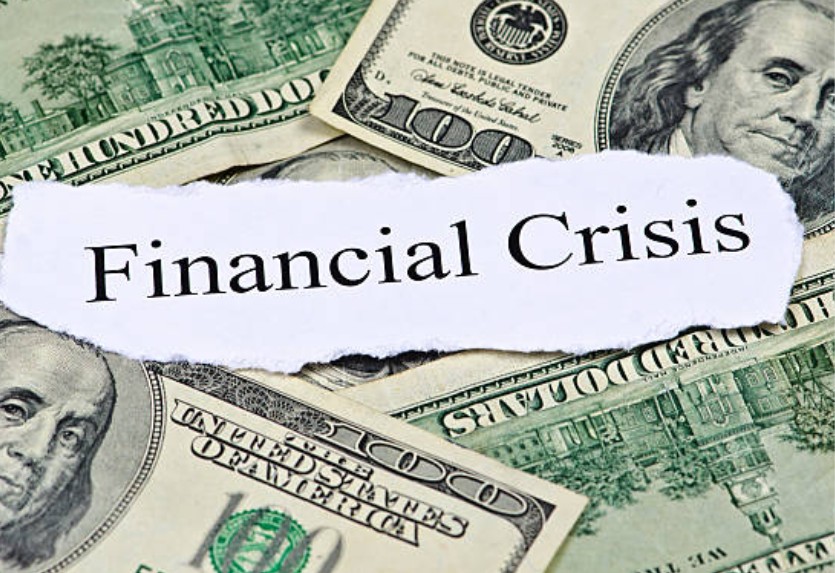In today’s extensive blog post, we dive deep into the critical question: What caused the 2008 Financial Crisis? Tailored for our UK readers, this guide unpacks the intricate mechanisms behind one of the most transformative financial events of our time. Through detailed analyses, chronological timelines, question-based subheadings, FAQs, and illustrative tables, we equip you with a robust understanding of the factors that led to the crisis and its lasting impact on global finance.
Introduction: What Sparked the Crisis?
When we ask What Caused the 2008 Financial Crisis?, we uncover that the roots of the crisis lie in a convergence of multiple interrelated factors. This catastrophic event was not born from a single mistake but rather from a series of interconnected economic missteps, regulatory failures, and unsustainable financial practices.
Key Themes Explored:
- The Subprime Mortgage Phenomenon
- The Rise of Complex Financial Instruments
- Regulatory Shortcomings
- Global Economic Interdependence
- Lessons for Future Prevention
Each of these elements interplayed to create a perfect storm that not only destabilised the US economy but also had significant repercussions for the UK.
What Caused the 2008 Financial Crisis?
This isn’t just a rhetorical question—it’s a critical economic case study. Let’s break down the main reasons starting from the very basics.
1. Subprime Mortgage Explosion in the US

Banks began issuing subprime mortgages—home loans offered to borrowers with low credit ratings. These were extremely risky, yet sold in massive volumes because they offered higher returns.
2. The Rise of Complex Derivatives
Wall Street bundled these risky loans into products like Mortgage-Backed Securities (MBS) and Collateralised Debt Obligations (CDOs). These products were sold globally, including to UK banks.
3. Credit Rating Agencies Misjudged Risks
Major credit rating agencies gave these toxic assets high ratings, falsely assuring investors, including British financial institutions, that they were safe.
4. Regulatory Gaps
Governments and regulators failed to monitor lending practices or understand the complexity of modern finance. The alerts went unheeded until the situation had already escalated beyond control.
How Did Subprime Mortgages Trigger the Financial Downfall?
At the heart of the financial meltdown was the hazardous proliferation of subprime mortgages. Financial institutions, in their pursuit of higher returns, relaxed lending standards to extend credit to borrowers with higher risk profiles. This led to several dangerous outcomes:
- Unsecured Loans: Loans were extended without adequate security, often relying on overly optimistic valuations of property.
- Adjustable-Rate Surprises: Borrowers initially benefited from low interest rates that later escalated, rendering monthly repayments unsustainable.
- Housing Price Inflation: An artificial surge in demand caused property prices to inflate beyond sustainable levels.
Insight for UK readers: Although the UK market has its unique characteristics, the shockwaves from the subprime crisis influenced global lending practices, prompting stricter controls and more cautious credit strategies.
How Did Financial Derivatives Obscure the Underlying Risks?
Financial derivatives, designed to distribute risk, quickly became a double-edged sword. Instruments such as mortgage-backed securities (MBS) and collateralized debt obligations (CDOs) masked underlying vulnerabilities:
- Risk Mismanagement: These bundles of loans appeared diversified on paper but concealed poor-quality assets.
- Overleveraging: The excessive use of borrowed funds significantly amplified the losses incurred once defaults began to pile up.
- Interconnected Failures: The dependency among institutions meant that a default in one segment could lead to domino effects throughout the global financial system.
Key Point: The opacity and inherent complexity of these products prevented investors and regulators from accurately gauging the true risk, thereby accelerating the crisis.
Why Did Regulatory Oversight Fail When It Was Needed Most?
A critical question remains when addressing What Caused the 2008 Financial Crisis? — Was regulatory failure the linchpin? Despite existing safeguards, regulatory oversight was marred by several shortcomings:
- Fragmented Regulatory Environment: Multiple regulatory agencies with overlapping responsibilities contributed to significant gaps in supervision.
- Delayed Response: Early warning signs were recognized, but policy action was too little, too late.
- Inadequate Capital Buffers: Many financial institutions operated on razor-thin margins, leaving them ill-prepared for sudden market shocks.
UK Perspective: Following the crisis, UK regulators such as the Financial Conduct Authority (FCA) and the Bank of England have strengthened measures to ensure robust, real-time monitoring of financial risks.
How Did Global Interconnectedness Amplify the Crisis Impact?

The globalisation of financial markets played a vital role in the spread of the 2008 crisis. Though the initial trigger was the collapse of the US housing market, the ripple effects quickly spread worldwide:
- Credit Freeze: Institutions across continents suffered from liquidity shortages, leading to a sudden halt in credit flow.
- Economic Recession: The crisis led to a global economic slowdown, affecting consumer confidence and industrial output in markets ranging from North America to Europe.
- Coordinated Policy Response: The scale of the downturn necessitated coordinated interventions by governments and central banks, including significant steps taken by the UK to stabilize its economy.
What Does the Timeline Reveal About the Crisis?
Understanding the sequence of events is crucial in answering What Caused the 2008 Financial Crisis? Below is a comprehensive timeline that highlights key milestones and their implications:
| Year | Event | Impact |
| 2004-2006 | Ramp-up in Subprime Mortgage Lending | Relaxed lending standards and increased issuance of high-risk loans; property values soared, seeding a bubble. |
| 2007 | Initial Defaults and Market Stress | Rising defaults triggered early signs of instability; financial institutions began showing distress signals. |
| 2008 | Major Institutional Failures and Global Credit Freeze | The collapse of Lehman Brothers and other key players; global markets plunged, triggering widespread recession. |
| 2009 | Government Interventions and Reforms | Coordinated fiscal and monetary policies helped stabilise the financial system; new regulations began to take shape. |
| 2010-2020 | Gradual Recovery and Long-term Reforms | Economic recovery ensued, with sweeping changes in banking practices and enhanced regulatory oversight implemented. |
| 2023-2025 | Ongoing Reassessment and Future Safeguards | Continuous analysis and emerging digital finance innovations prompt further refinements in risk management and policy. |
Could Risky Investments and Insufficient Oversight Be the Real Culprit?
One of the most debated aspects of What Caused the 2008 Financial Crisis? is the role of risky investments:
- Overreliance on Credit Ratings: Investors heavily depended on ratings that significantly underestimated the risk of mortgage-backed securities.
- Flawed Risk Models: Many financial models failed to predict or account for worst-case scenarios, contributing to widespread miscalculations.
- Culture of Short-Term Gains: Financial institutions were often more focused on immediate profits rather than long-term stability, fostering a dangerous environment of risk-taking.
Did Weak Oversight Further Exacerbate the Problem?
- Regulatory Gaps: The fragmented regulatory framework allowed high-risk practices to persist and proliferate.
- Lagging Policies: Despite the presence of early warning signs, reforms and policy adjustments were implemented only after the crisis began to spiral.
- Global Disparities in Regulation: Inconsistent regulatory standards across different countries created opportunities for exploitation and regulatory arbitrage.
How Have the Lessons of 2008 Shaped UK Financial Practices?

For UK readers, the inquiry into What Caused the 2008 Financial Crisis? is not only a historical investigation but also a guidepost for future financial practices:
- Enhanced Consumer Protection: More stringent lending criteria and improved financial transparency have been enacted to protect consumers.
- Robust Regulatory Frameworks: The UK continues to refine its financial oversight mechanisms, focusing on real-time data and coordinated responses to emerging risks.
- Increased Public Awareness: Financial literacy programs aim to empower citizens with the knowledge to make informed decisions amid economic uncertainties.
What Are the Future Safeguards in Place?
- Stronger Capital Buffers: UK banks now maintain higher capital reserves to better absorb financial shocks.
- Real-Time Risk Monitoring: Advanced technological solutions facilitate the continuous assessment of market conditions.
- International Cooperation: Active participation in global financial forums ensures that UK policies remain aligned with international best practices.
What Do Financial Experts Say About Preventing Future Crises?
Renowned UK economists and financial experts emphasize:
- Sustainable Lending Practices: Shifting focus from short-term profits to long-term stability is crucial.
- Modern Regulatory Approaches: Embracing agile regulatory frameworks that can respond swiftly to market innovations is paramount.
- Financial Education: Increasing financial literacy empowers consumers to make better decisions and hold institutions accountable.
What Challenges Lie Ahead?
As the global landscape evolves, challenges such as digital currencies, fintech disruptions, and shifting trade dynamics continue to reshape finance. Policymakers and regulators worldwide, including those in the UK, are adapting new strategies rooted in the lessons from 2008 to secure a more resilient future.
Conclusion: What Does This All Mean for Us Today?
Answering What Caused the 2008 Financial Crisis? reveals a multifaceted interplay of subprime lending, complex financial products, and regulatory failures—all magnified by global interconnections. For UK readers, this analysis offers critical lessons: robust oversight, transparent financial practices, and the imperative for continuous adaptation.
By dissecting this complex phenomenon through detailed analyses, question-based subheadings, timelines, and expert opinions, we provide a dynamic resource that not only honours the lessons of the past but also illuminates the path toward a more resilient financial future.
This guide remains a living document—evolving as new challenges arise and as our understanding of global finance deepens. Staying informed, asking the right questions, and acting proactively are our best defenses against the recurrence of such crises.
FAQs: Answering the Most Pressing Questions
What were the primary causes behind the 2008 financial meltdown?
The crisis resulted from a cocktail of risky subprime mortgages, overly complex financial instruments, and inadequate regulatory oversight. This mixture created a volatile environment, leading to widespread economic collapse.
What regulatory reforms were introduced after the crisis?
Post-crisis reforms included higher capital requirements, improved disclosure standards, and enhanced coordination among international regulatory bodies. The UK, in particular, strengthened its oversight with more robust financial monitoring systems.
How can consumers and investors safeguard themselves in today’s volatile economic environment?
Consumers and investors can protect themselves by staying informed, diversifying their investments, and ensuring adherence to sound financial practices. Enhanced transparency and a focus on long-term stability are key takeaways from past mistakes.






